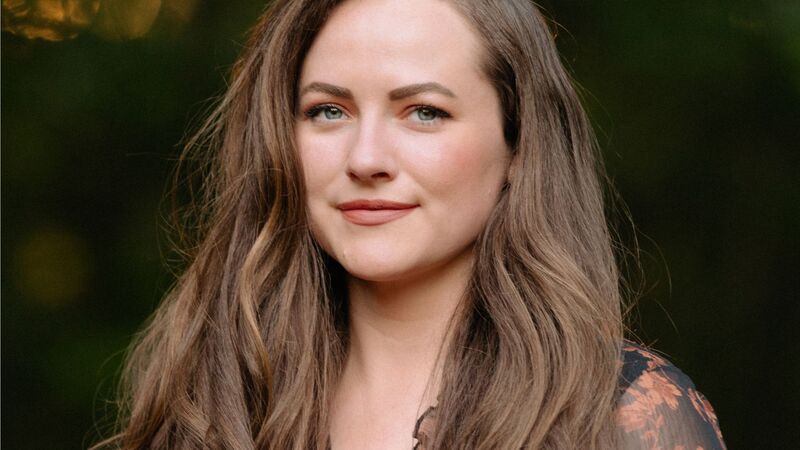You are viewing your 1 free article this month. Login to read more articles.
Philip Pullman's Scary Tales
Philip Pullman
Fed
Up so long and variously by
Our age’s fancy narrative concoctions,
I yearned for the kind of unseasoned telling found
In legends, fairytales, a tone licked clean
Over the centuries by mild old tongues,
Grandam to cub, serene, anonymous
.
... So my narrative
Wanted to be limpid, unfragmented;
My characters, conventional stock figures
Afflicted to a minimal degree
With personality and past experience –
A witch, a hermit, innocent young lovers,
The kinds of being we recall from Grimm,
Jung, Verdi, and the commedia dell’arte.
So writes the American poet James Merrill at the opening of ‘The Book of Ephraim’, the first part of his extraordinary long poem ‘The Changing Light at Sandover’ (1982). Discussing the way in which he hopes to tell a story of his own, he singles out two of the most important characteristics of the fairytale as he sees it: the “serene, anonymous” voice in which it’s told, and the “conventional, stock figures” who inhabit it. Can the writer of any version of a fairytale ever come near to James Merrill’s ideal tone, “serene, anonymous”?
Of course, the writer might not wish to.
There have been many, and there will be many more, versions of these tales that are brimful of their author’s own dark obsessions, or brilliant personality, or political passions. The tales can stand it. But even if we want to be serene and anonymous, I think it’s probably impossible to achieve it completely, and that our personal stylistic fingerprints lie impressed on every paragraph without our knowing it.
The only thing to do, it seems to me, is to try for clarity, and stop worrying about it. Telling these stories is a delight it would be a pity to spoil by anxiety. An enormous relief and pleasure, like the mild air that refreshes the young count when he lies down to rest in ‘The Goose Girl at the Spring’, comes over the writer who realises that it’s not necessary
to invent: the substance of the tale is there already, just as the sequence of chords in a song is there ready for the jazz musician, and our task is to step from chord to chord, from event to event, with all the lightness and swing we can.
Like jazz, storytelling is an art of performance, and writing
is performance too.
Finally, I’d say to anyone who wants to tell these tales, don’t
be afraid to be superstitious. If you have a lucky pen, use it. If you speak with more force and wit when wearing one red sock and one blue one, dress like that. When I’m at work I’m highly superstitious. My own superstition has to do with the voice in which the story comes out. I believe that every story is attended by
its own sprite, whose voice we embody when we tell the tale, and that we tell it more successfully
if we approach the sprite with
a certain degree of respect and courtesy.
These sprites are both old and young, male and female, sentimental and cynical, sceptical and credulous, and so on, and what’s more, they’re completely amoral: like the air-spirits who helped Strong Hans escape from the cave [in the story ‘Strong Hans’], the story-sprites are willing to serve whoever has the ring, whoever is telling the tale.
To the accusation that this is nonsense, that all you need to tell a story is a human imagination.
Polly Shulman
Once upon a time, wolves padded through the forests, trolls lurked under bridges, witches preheated their ovens, and all hunted their favourite food: children. These characters may have given way to drug gangs, human traffickers, school bullies and cruel parents, but the terrors are the same.
What makes them so frightening is children’s powerlessness in the face of even the mildest dangers. But in fairytales even the weakest kids can wring a happy ending
out of a hard world. In fairytales, dangers are never petty and humiliating. Instead of tough maths exams there are ogres; instead of mean girls there are wicked fairies. And the scarier the dangers, the better it feels when the hero or heroine inevitably overcomes them.
As a child I devoured fairytales. They gave a sense that the world had a moral order: good would triumph, and a kiss could break the witch’s spell. Most of all, I loved the magic objects that peppered the stories: flying carpets, seven- league boots, invisibility cloaks. I reply, “Of course, and this is the way my imagination works.” But we may do our best by these tales, and find that it’s
still not enough. I suspect that the finest of them have the quality that the great pianist Artur Schnabel attributed to the sonatas of Mozart: they are too easy for children and too difficult for adults.
I spent my childhood searching for magic. I wished on pennies, tried to get the pigeons to talk to me, and burrowed through wardrobes hoping to find Narnia at the back. I never made it to Narnia,
but one wish did come true: that someday I would write a book full of magic. In my novel The Grimm Legacy, the teenage heroine works in a Manhattan library that lends out objects instead of books – and hidden in the basement are locked collections of magical objects.
As any reader of fairytales knows, magic objects can be just as dangerous as any ogre. If you make the wrong wish, you may end up trapped for eternity in a bottle. But if you’re brave and true, you’ll break the spell with a kiss or strand the enchanter in a desert of snow – and live happily ever after.
Darren Shan
I only really recall one picture book that I read as a child. It was about pirates who sailed the seven seas looting and pillaging, and it ended with them all dying – the last picture was of them lying dead onboard their ship, little Xs where their eyes should be. The book has stuck with me because it was one of the first times I faced death directly. It’s important that we do that as children. Death is a natural part of life, something we all have to face, and I think it is less scary when we learn to accept and deal with it from an early age.
Children’s literature has traditionally tackled issues of mortality head-on, whether in the retelling of Ancient Greek myths (eg Spartacus or Achilles), Arthurian legends or the Grimms’ fairytales, or in the likes of Oliver Twist and The Secret Garden. In these stories, children are confronted with the reality of death and forced to think about the dangers of the world they live in and the fragility of their own existence. Some people might argue that a child’s emotional education should be left to their parents and teachers, that the thorny issue
of death should be approached only by those closest to the developing individuals.
But I think that undervalues the power of stories. I believe
that humans realised from a very early stage that children are more inclined to absorb information if it is encoded within a spellbinding, bloodthirsty piece about gods, monsters or whatever. If you want a child to remember the names of Roman senators, weave them into tales of wickedness and treachery. If you want to warn your young not to wander from the marked path in a forest, tell them a
story about wolves or witches operating in the leafen depths.
To pass on our wisdom to
a child, we must first get them
to interact with us, and a good horror story (or one with a dark underbelly) can draw in even the most reluctant of students. Robert Cormier’s The Chocolate War is
a vicious tale of bullying, but it teaches us to be wary of systems that channel us in one direction, and which grind down those who try to be different. Roald Dahl’s The Witches is creepily hilarious, but it also teaches us to be more concerned about the quality of our lives than the length of them.
In my Zom-B series I have
used the allure of brain-munching zombies to write about racism and extremists. On the one hand it hopefully involves readers in a twisting, exciting story about a teenager’s adventures in a post-apocalyptic city of the undead. On the other, it urges them to think long and hard about prejudice and the politics of fear, about warmongers and the need to take responsibility for our actions. I see Zom-B as part of a long and thriving culture that passes through the Grimms' fairytales, Roald Dahl and so many others. Children’s writers and storytellers have explored the darkness of the human condition for as far back
as we can remember. I hope that we continue to do so for as far into the future as we can dream.
Grimm Tales by Philip Pullman is out on 27 September, published by Penguin Classics; The Grimm Legacy by Polly Shulman is out now, published by OUP; Zom-B is out on 27 September, published by Simon & Schuster.















